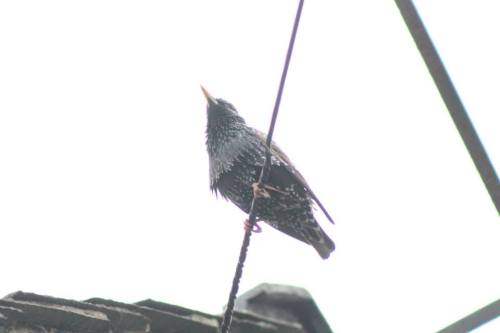My first four days of taking part in the Wildlife Trusts 30 Days Wild has been an experience of two halves. Today we took one of the dogs down the river, spotting an oystercatcher and his veering trail of footprints left in the wet sand. Yesterday I met with one of my tutors for my Wild Writing MA, followed up by a wild lunch sat on Broomheath over looking the River Deben. We were surrounded by dried rabbit droppings, though only spotted one darting behind a hedge, and ferns only just beginning to unfurl their fiddleheads, apparently having been relatively recently (for a planet that has been largely unchanged for over 100 million years) mowed down. The eradication had afforded us a better view of the river and the villages and fields on the hills beyond, but I would have much preferred the forest of ferns. Any time I wander through a sea of their geometric leaves I feel transported back to the Cretaceous Era, awaiting the stampede of long extinct beasts, apparently no match for those curling green leaves.
On the first two days it was only the weather that was wild. What with gales of wind and the rain threatening all day I failed to get out and instead spent most of my days snuggled in a winter jumper, a splatter of rain incapacitating me from escaping from my elaborate burrow. On day 1 I tried imprinting leaves on paper, with little success. On day 2 late in the evening I decided to switch on some wildlife webcams. The first few I tried were, unsurprisingly, completely black, obviously set up in a place miraculously far away from the unrelenting lights so many of us have become used to. Eventually I caught some creatures awake. A family of peregrines nested on Aylesbury county hall. I couldn’t work out how many there were or how old any of the members were. I could clearly see at least three. One, I thought to be male, spent a long time preening with another curled up next to him. I assumed this second to be a female as she looked about twice the size. I flicked back later and another had risen up from the huddle and took up the preening routine. It was an oddly cosy and domestic image for animals so perfectly designed for murder. They appeared fluffy with their fledgling feathers and snuggled next to each other for warmth.
Barn Owls were next. I watched one where a bundle of chicks nestled close to the lens. They screeched incessantly for food and their mother. I turned on another and was immediately met with the face of a barn owl mother turned 180 degrees. She shuffled and twitched on her spot for a long time but eventually moved to reveal another clutch of chicks. Before leaving for her night time hunt she stretched and turned back and forth. There were times when she looked terrifyingly human. At one point, her face turned and catching the light in a particular way, it looked like she was wearing a Venetian mask, an eerie pale and pointed visage. Then she moved closer to the entrance of the box and spread her wings, looking like some sort of odd caricature of a human, a clown fooling about before the beginning of a show or a stout man limbering up for the day.
While the last two days I’ve been in amongst my nearby nature and relaxed under the dappled light that escapes from a canopy of leaves, it was during the first two days, trapped by the mild grievance of nature’s unpredictable weather, that I was reminded how close we really are to the wild. The wild isn’t something foreign and distant that you must escape from the confines of an urban environment to discover. It can be domestic and sometimes it bears a human face. You shouldn’t have to step out of your comfort zone to experience the wild, just lift your head and open your ears to incorporate it into your life.



